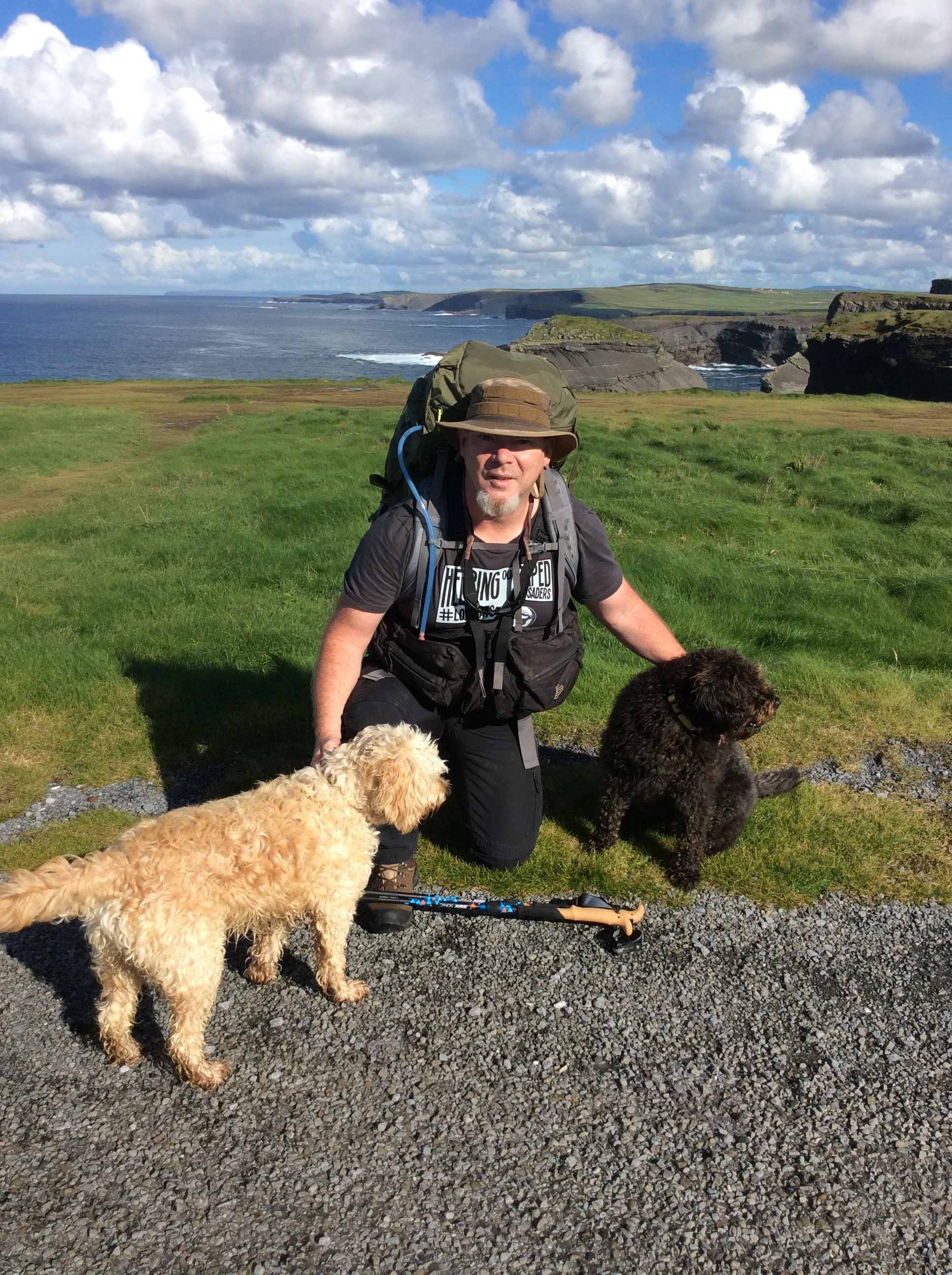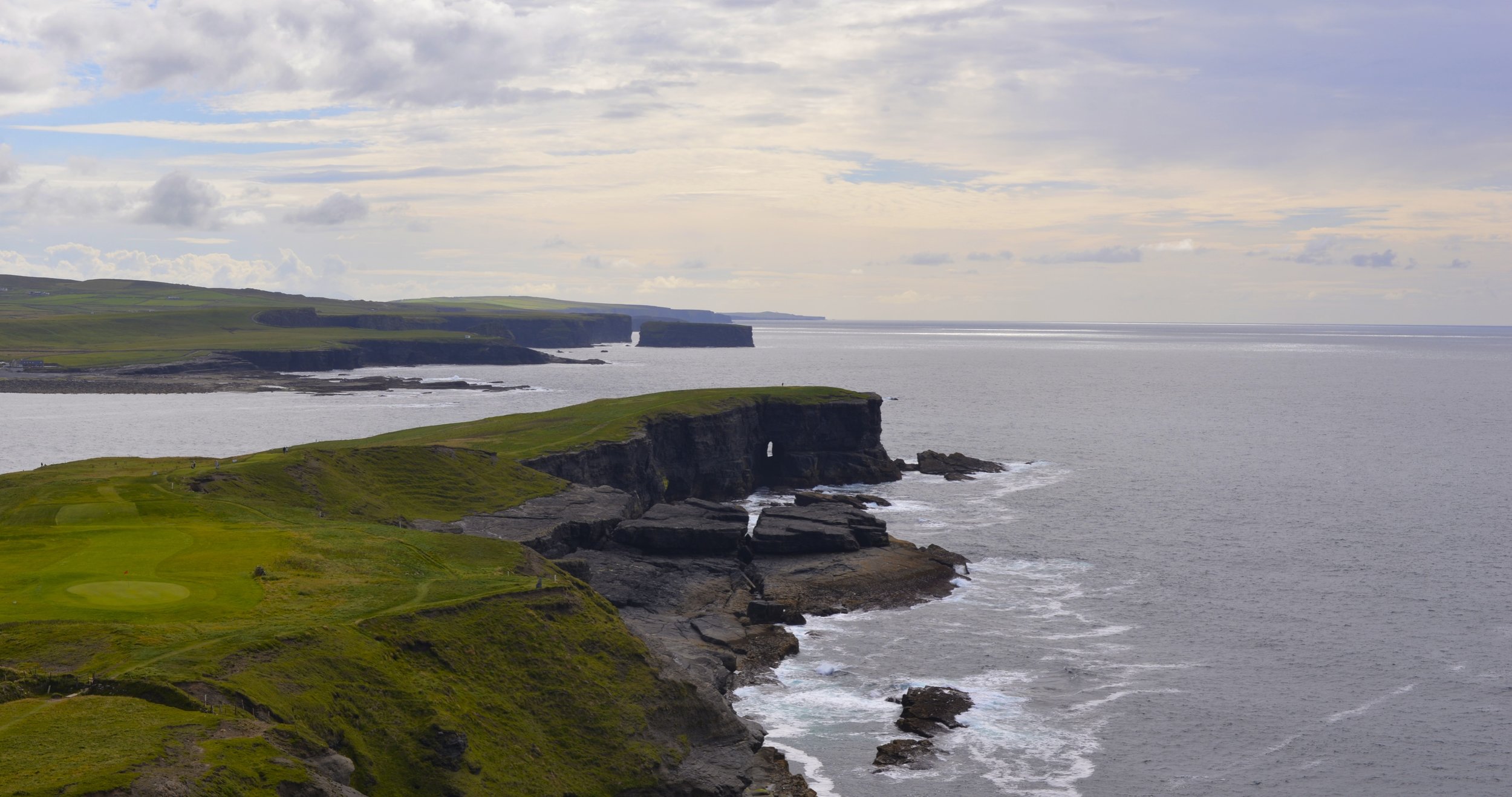dermot cosgrove
A step into nature often leads to exciting places. Read how a childhood spent in the west of Ireland inspired a lifetime of adventure!
All photos provided by Dermot Cosgrove
Where did you grow up, Dermot?
I grew up in Ennis in County Clare. It was still a small enough town at the time so there were still fields and forests not far from where I lived.
With all our connections to Ireland it seems fitting that we begin this series with an Irishman, although we didn’t know about him until we joined the global Instagram community. Dermot Cosgrove exudes a contagious energy. Born in County Clare, close to what is known as the Wild Atlantic Way, he is currently developing a nature guiding business in his local area. Whether it’s whale watching or bird watching that interests you, Dermot has a wealth of information to share regarding landscape, habitat and local history. Follow him at @dermotncosgrove, where you will learn about his work and his fundraising for Irish Dogs for the Disabled. We caught up with Dermot recently to chat a little about the role nature played in his childhood, and his upcoming solo walk along the Arctic Circle Trail, Greenland in July 2017.
House Martins
Ireland's Wild Atlantic Way
What are some of your favorite childhood memories associated with nature?
Watching wildlife from a close range, I would go out in the early morning during school holidays to nearby woodlands and lakes to track and watch local wildlife.
Red Deer Stag
Hare
Do you remember one special place with particular fondness?
Just outside of Ennis there's an area called Edenvale. The old house there was the home of the Stackpooles, one of whom (Gwendoline) is a real unsung heroine of Irish archaeology. The Stackpooles turned the house into a sanatorium to treat tuberculosis sufferers during the 1940's (my grandfather was there for a time). The land surrounding it was a mix of landscapes from conifer forestry to open fields, small lakes, deciduous woodland and marsh land. I learned to track rabbit and fox there, learned to fish and came to know the names of water birds. A portion of it now is contained in the Ballybeg woodland managed by Coillte (a commercial company that manages forests to deliver social, economic and environmental benefits) and I still visit it regularly.
Northern Wheatear
How has nature inspired you to live the life you are currently living?
Living where I am now on the Loop Head Peninsula you can't help but be inspired by nature as it's right there in front of you every morning when you wake up. I do a lot of bird and wildlife watching while I'm home and I've encouraged wildlife to come into the garden of my house which is surrounded by farmland. I've had as many as 5 foxes visiting in a night. My partner has put out quite a number of bird feeders and nesting boxes. I've been inspired to get out and learn more about the wildlife living in my area along with photographing and reporting sightings to Birdwatch Ireland and the Greenland White-fronted Goose Study. I've also been collecting data on the feeding habits of coastal ravens in the area to pass on to the Natural History Museum which led to some interesting encounters with a pair of ravens last May.
Raven
My interest in trekking Greenland started after I began corresponding with a member of the Greenland White-fronted Goose Study based in Wales who has trekked the Arctic Circle Trail on a few occasions.He gave me a detailed overview of what it was like and so I started planning.
The trail is located 35kms north of the Arctic Circle and extends from the town of Sisimiut of the West Coast through to the town of Kangerlussauq, a distance of roughly 170kms and all in open tundra. I'll be walking past Kangerlussuaq to a place called Point 660 which is traditionally where teams walking across the ice sheet come off the ice and then back to Kangerlussauq where I'll catch my flight back to Copenhagen and home and giving me a 250km journey.
My connection to Irish Dogs for the Disabled (not to be confused with Guide Dogs) is through my sister who is a dog fosterer. She takes pups and socialises them so they get use to families and being around people. Dogs for the Disabled is a Cork based charity who provide assistance dogs to physically disabled people (mostly children) to perform a number of functions. They're the only charity in Europe who train specialist stability dogs who help people to walk. I decided that while I was doing the trek while it was something of interest to me and I want to try and photograph the wildlife there that I could combine that by raising funds for a good cause. IDftD receives no government support so they rely totally on donations, they don't spend a lot on advertising as they prefer to spend as much as they can on training. The average cost of training an assistance dog is about 15,000 Euro so it's a massive investment and there's a three year waiting list. As a dog lover I know how important my two crazy mutts are to me so I can't begin to imagine how important one of these dogs are to their owners as they're a life changer and anything I can do to help give someone a chance at having a better quality of life I'm happy to do.
Gannets
Atlantic Puffin
Can you recommend a special book from your childhood?
Animal Tracks and Signs: A Spotters Guide (Usborne) was a book which was constantly with me when I was out and about growing up and still have it. It's a great book for kids to get them interested in signs and animal tracks. I've gathered a few more books on tracking over the years and used much of what I learned from them during my time in the French Foreign Legion.
Harbor Seal
Congratulations to Dermot on his upcoming trek! Make sure to follow Dermot on Instagram @dermotncosgrove to learn more about his journeys.










